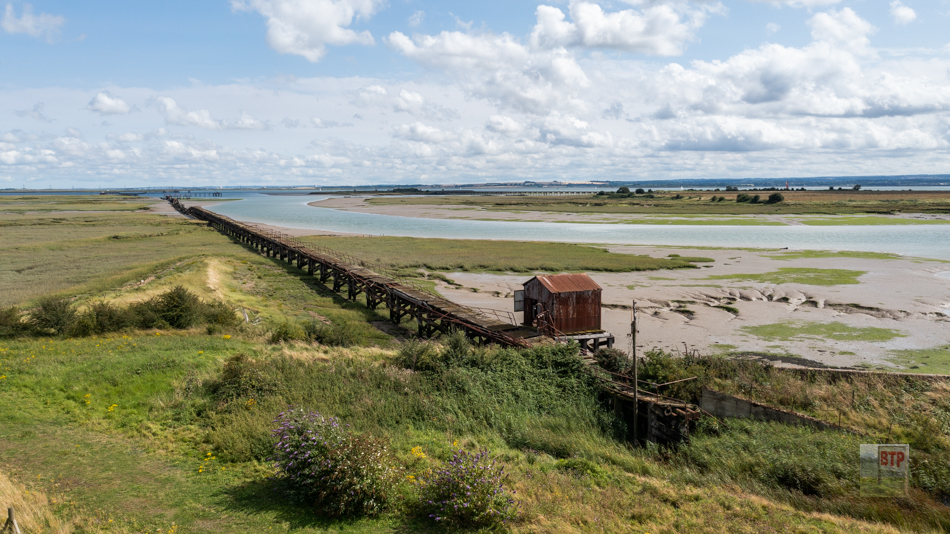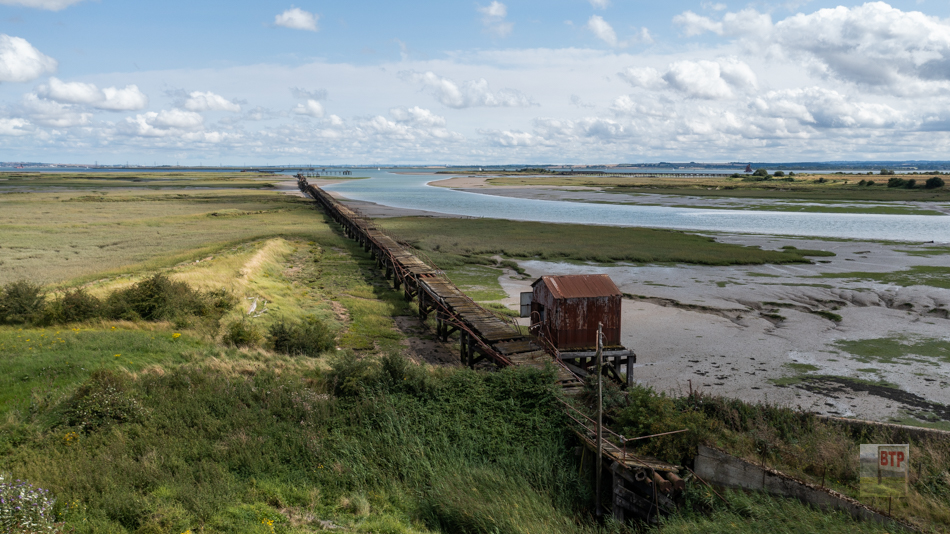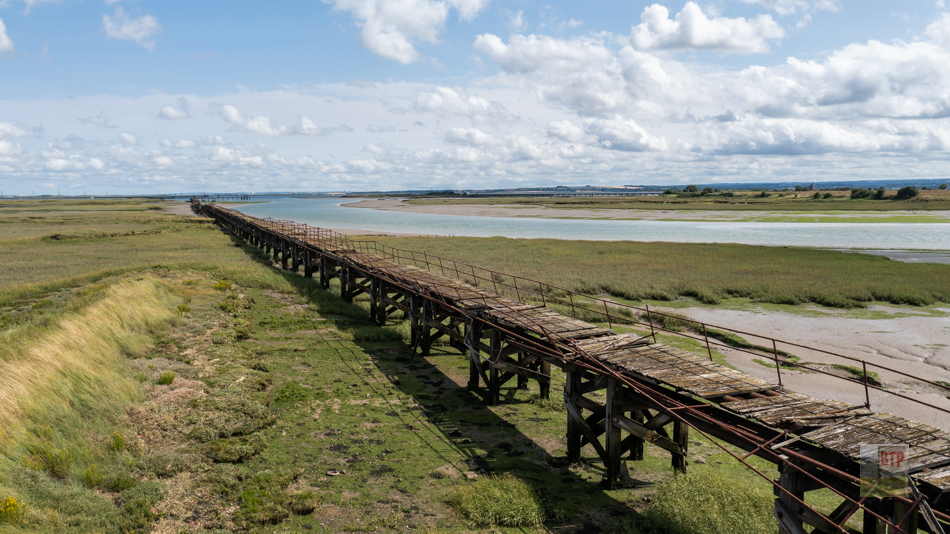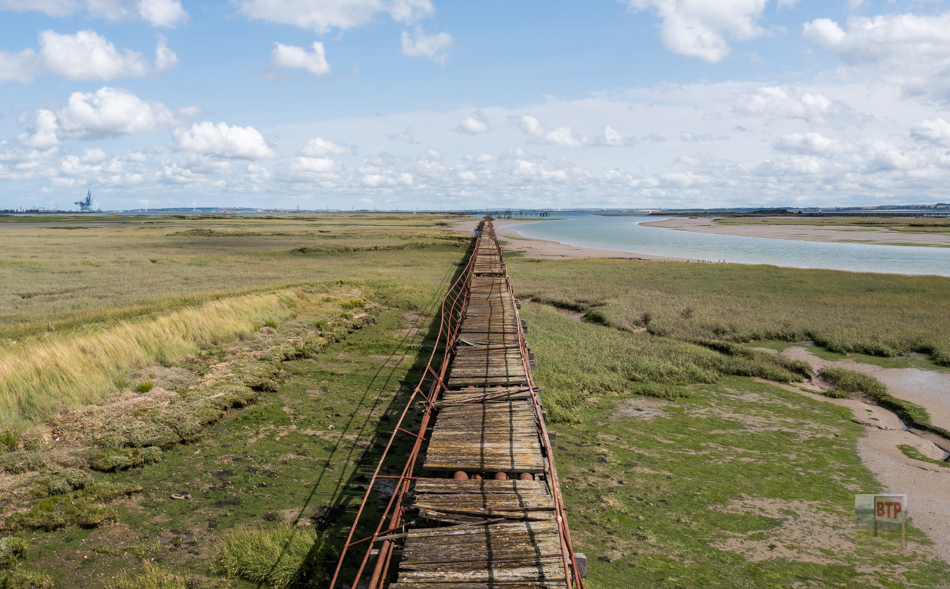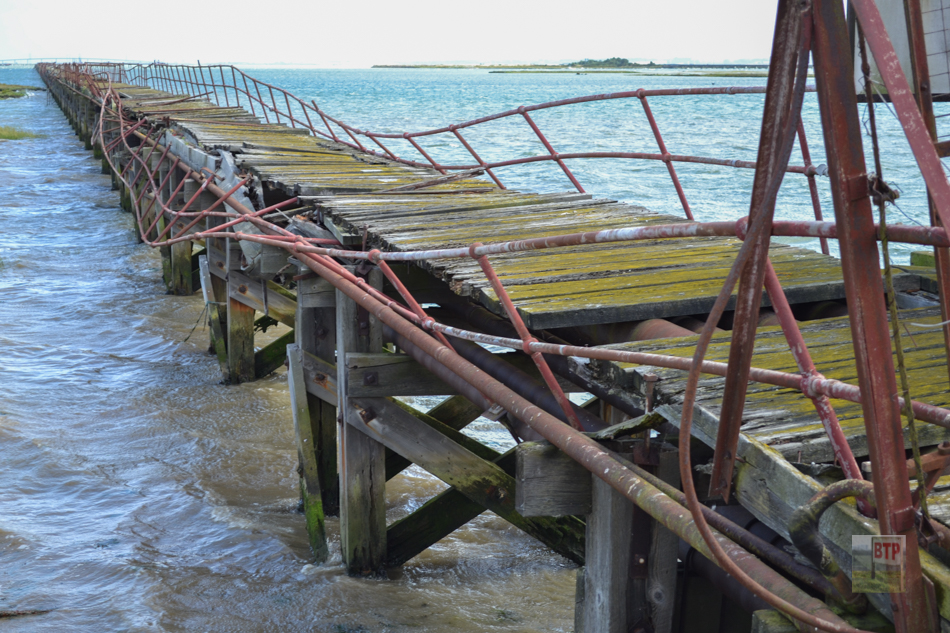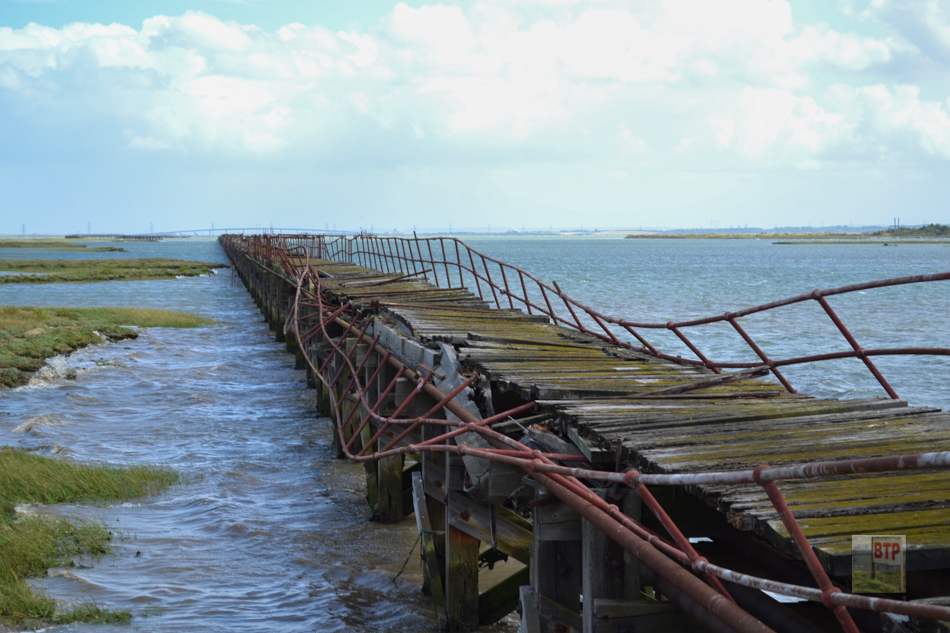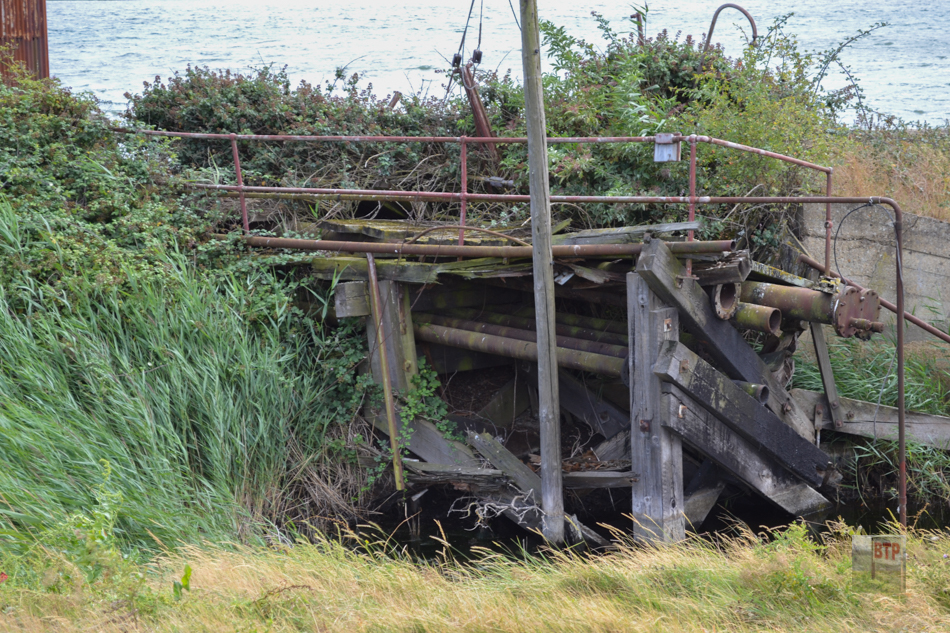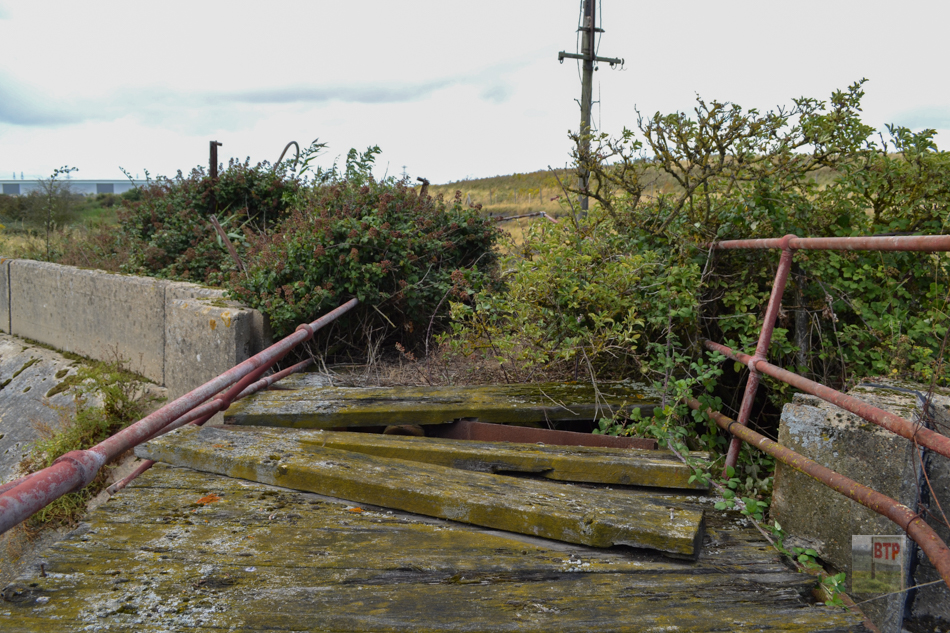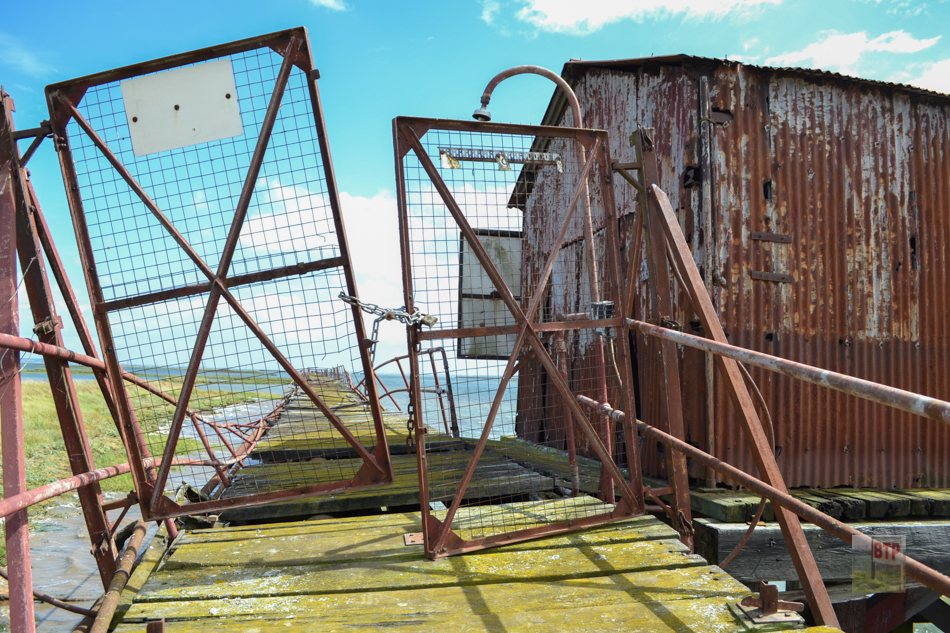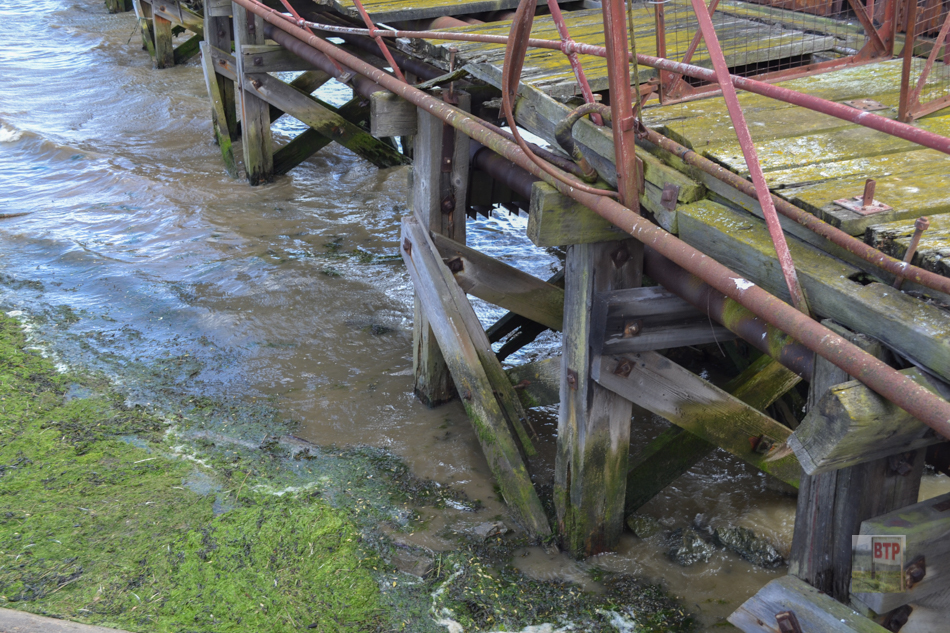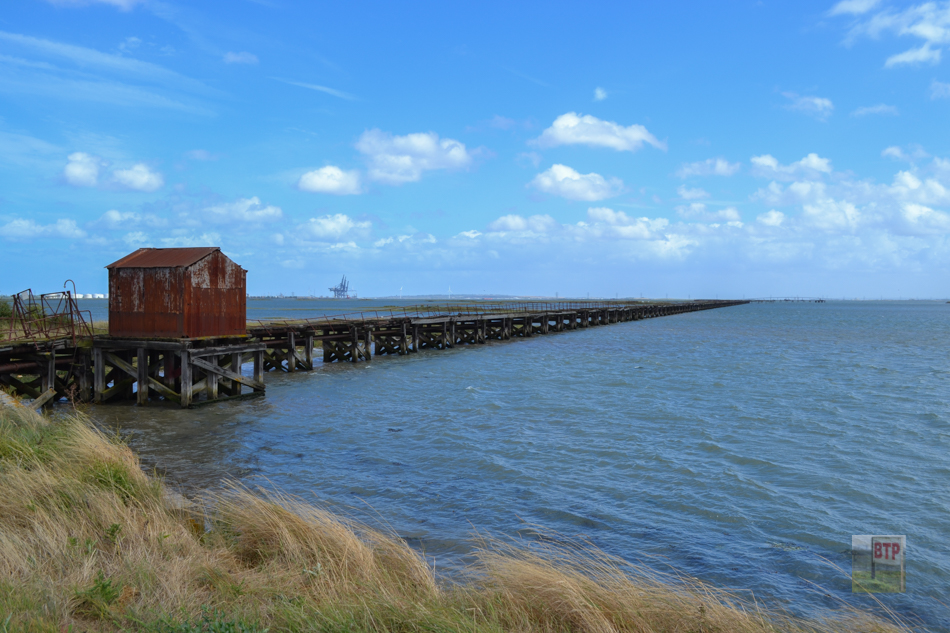The Bee Ness jetty was part of the Berry Wiggins & Co Oil refinery, formed in 1922 to supply bitumen (asphalt). By 1924 the company was producing bitumen from a plant at Sharnal Street on the Isle of Grain and in 1929 the company expanded, becoming a public company with premises at several locations including Manchester and Stratford. The 323 acres the company purchased at Kingsnorth included a number of buildings that were formerly part of the RAF Kingsnorth base which closed in 1920. This included a jetty used to deliver crude oil although it wasn’t used for long as the company built Bee Ness Jetty which was opened in 1937. Stretching out for over 2.5km into the River Medway, this makes the jetty the longest in Britain.
In 1930 Wiggins started work on an oil refinery at Kingsnorth, which was completed by 1932. By 1964 the company had an annual capacity of 190,000 tons of asphalt and other oil based products. Bees Ness jetty was built by the company in 1937, while a third nearby jetty, Oakham Ness, was built in 1964 to be used jointly with Kingsnorth Power Station. The Berry Wiggins complex at Kingsnorth ceased operations in 1977 and the site was sold to BP. The site was even used as a filming location for the Dr Who Story in 1970!
The Berry Wiggins oil refinery is visible on aerial photographs taken in 1952 and was the first oil refinery to be built on the Hoo peninsula. The 1952 photographs also show a pipeline running between the refinery and a small 19th century wharf on Damhead Creek. An aerial photograph taken in 1942 shows the oil storage tanks painted with a camouflage pattern. View more aerial photos here. Photos from 2013 show the end of the jetty with two cranes and a small hut on it. Disconnected from the rest of the jetty, I wouldn’t want to climb on it from a boat either! View the 2013 photo on Flickr here.
Information Sources: Kent History Forum, Pastscape

